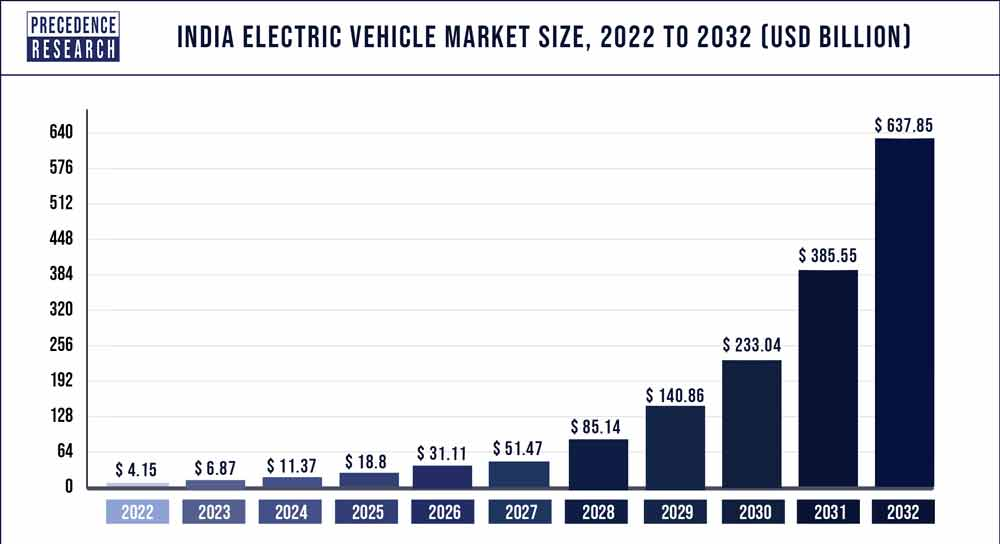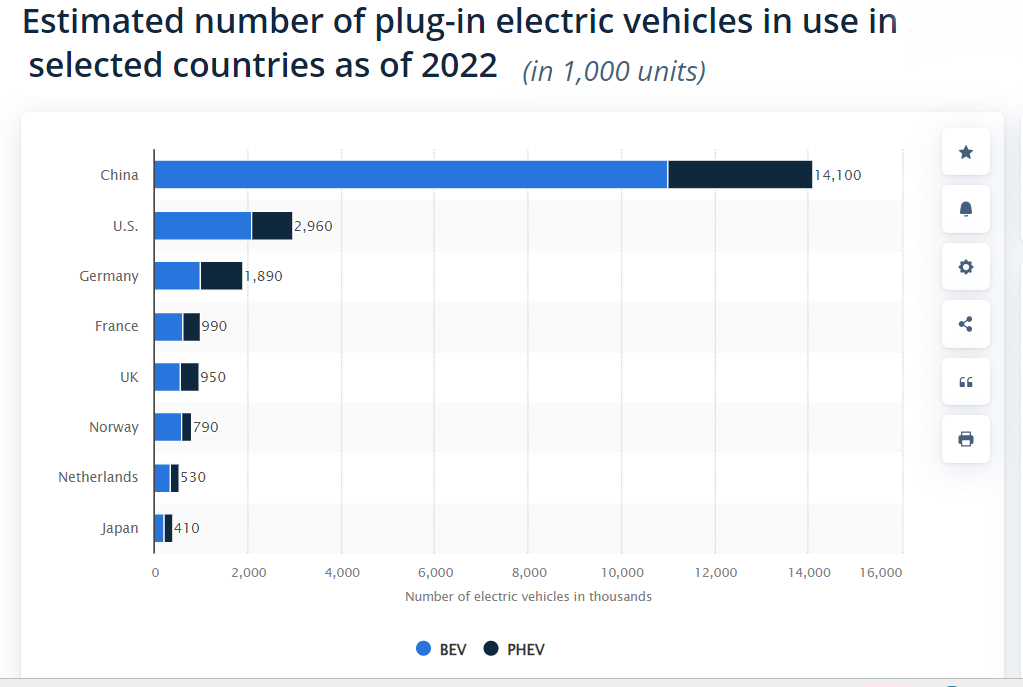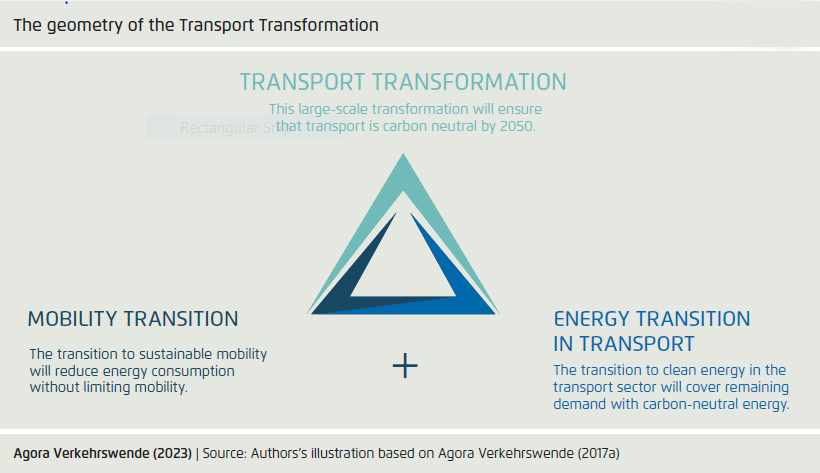Biodiversity & Environment
Electrification: India’s Strategy to Decarbonise Road Transport
- 28 Nov 2023
- 15 min read
This editorial is based on “Fleet Electrification to tackle urban pollution” which was published in The Hindu on 27/11/2023. It talks about the issue of air pollution, mainly originating from vehicle emissions, and endorses the electrification of road transport as a crucial strategy for reducing carbon emissions in the transportation sector.
For Prelims: Greenhouse Gas (GHG) emissions, EVs, Faster Adoption and Manufacturing of Electric Vehicles (FAME) Scheme II, National Electric Mobility Mission Plan (NEMMP), Vehicle Scrappage Policy, Model Building Bye-laws, 2016 (MBBL), National Mission on Transformative Mobility and Battery Storage, Goods and Services Tax (GST), NITI Aayog.
For Mains: Necessity for Electrification of Road Transport in India, Key Challenges in Electrification of Road Transport in India, Major Government Initiatives for Transport Electrification in India, Best International Practices, Way Forward.
Many cities in India have experienced poor air quality many times this year, making the air unhealthy for millions of people. Two important studies about Delhi pollution, one from 2015 called Urban Emission and another from 2018 by TERI, show that a big reason for the smog in cities is pollution from tiny particles called PM2.5 and PM10. These particles mostly come from vehicles and construction activities.
In this situation, the adoption of electric vehicles in road transportation has the potential to effectively combat the problem of air pollution in the country.
What Prompts the Necessity for Electrification of Road Transport in India?
- Air Quality Improvement:
- Globally, the transport sector contributes about 25% of CO₂ emissions from fuel combustion and 15% of Greenhouse Gas (GHG) emissions.
- According to the latest International Transport Forum Report, by 2050 global CO₂ emissions from transport will increase by 16%, even if today’s political commitments are fully implemented.
- Out of the 50 most polluted cities in the world, 35 are in India.
- Electrification of road transport can reduce criterion air pollutants, specifically NOx and PM2.5, which is important for improving ambient air quality, particularly in densely populated cities.
- Reduced Dependence on Fossil Fuels:
- Transport is heavily reliant on oil, with 95% of demand met by petroleum products. Just under half of India’s oil demand is accounted for by transport.
- Electrification decreases this dependence, promoting cleaner and more sustainable energy sources. By diversifying the energy sources for transportation, electrification enhances energy security.
- Transport is heavily reliant on oil, with 95% of demand met by petroleum products. Just under half of India’s oil demand is accounted for by transport.
- Global Climate Change Mitigation:
- Electrifying road transport aligns with global efforts to combat climate change.
- Electric vehicles generally have lower carbon emissions, supporting India's commitment to reducing greenhouse gas emissions.
- In 2021, various researchers claimed that electrical vehicles in India produced approximately 19-34% fewer GHG emissions than gasoline cars.
- Potential Source of Economic Growth:
- India is the world’s fourth largest car manufacturer, making EVs a potential source of economic growth and exports. The Indian government is committed to achieving 30% electrification of total mobility by 2030.
- Electric mobility creates jobs and innovation in battery manufacturing, renewable energy, and charging infrastructure.
- Urban Planning and Livability:
- Electric vehicles can help decongesting cities by promoting shared mobility and compact design.
- It may open avenues for pedestrian-friendly spaces, cycling infrastructure, and efficient public transportation, contributing to overall urban livability.
What are the Key Challenges in Electrification of Road Transport in India?
- Decarbonization of Power Generation:
- Policies for decarbonization of road transport through electrification without decarbonization of power generation will merely shift pollution from the tailpipes of vehicles to smokestacks of thermal power generators.
- Without any pollution control measures in place, heavy reliance on coal power plants to generate electricity for electrical vehicles can result in up to multiple times higher emissions of SO2.
- Lifecycle Carbon Emissions of EVs:
- Recent research concluded that EVs must be driven 200,000 km before their “whole of life” carbon emissions equal that of an internal combustion engine vehicle.
- "Whole of Life” carbon missions is the total carbon emissions produced over the entire life cycle of a product, process, or system, including manufacturing, use, and disposal.
- The large quantity of energy needed to manufacture a lithium-ion battery and the typical weight of an EV which is on average 50% higher than a similar ICE (Internal Combustion Engine) vehicle that requires more steel and aluminium in the frame are among the reasons.
- Recent research concluded that EVs must be driven 200,000 km before their “whole of life” carbon emissions equal that of an internal combustion engine vehicle.
- Technology Barriers to Electrification :
- The production of lithium-ion batteries, which are a key component of EVs, requires specific minerals and rare earth elements.
- India currently relies heavily on imports for battery manufacturing, leading to supply chain challenges.
- Financing Challenges Faced by the EV Sector:
- The upfront cost of purchasing an electric vehicle is relatively higher compared to conventional vehicles.
- The high initial cost makes it less affordable for many potential buyers, limiting the demand for EVs.
- Need for better infrastructure:
- EVs require different charging and maintenance infrastructure than traditional ICE vehicles because of the differences in engine and other working parts.
- However, India's current charging infrastructure may not be enough to handle the increased demand for EVs.
- Given NITI Aayog’s projection of eight crore EVs on the road by 2030, India needs to have at least 39 lakh cumulative charging stations between FY 2022 and FY 2030.
- Low Market Penetration:
- The global EV market grew 43% annually on average over the last five years, and the worldwide automobile market penetration rate of EVs stood at about 2.6% in 2019.
- India, which is the fourth largest car market globally, still has EV penetration at only around 1%, and that too is dominated by electric two-wheelers. The market data indicates that the sales of electric buses and cars amounted to just 4000 units in the fiscal year 2020.
What are the Major Government Initiatives for Transport Electrification in India?
- Faster Adoption and Manufacturing of Electric Vehicles (FAME) Scheme II
- National Electric Mobility Mission Plan (NEMMP)
- Production Linked Incentive (PLI) scheme
- National Mission on Transformative Mobility and Battery Storage
- Vehicle Scrappage Policy
- Ministry of Power: In its revised guidelines on charging infrastructure prescribed that at least one charging station should be present in a grid of 3 km and at every 25 kms on both sides of the highways.
- Ministry of Housing and Urban Affairs: It has amended the Model Building Bye-laws, 2016 (MBBL) to mandate setting aside 20% of the parking space for EV charging facilities in residential and commercial buildings.
- Department of Science and Technology: It has launched a grand challenge for developing the Indian Standards for Electric Vehicle Charging Infrastructure.
- High Taxes on Petrol and Diesel: High taxes on Petrol and Diesel (about 60 % of retail prices), lowering of Goods and Services Tax (GST) from 12 % to 5 % on EVs along with tax and other incentives offered to EV purchasers are expected to drive the growth of EVs.
What Can India Learn from Other Countries' Success?
- Setting up a Well-defined Electric Mobility Roadmap:
- United Kingdom: It has released a Transport Decarbonization Plan with commitments and actions to decarbonize the UK’s transport to zero-emission cars and vans by 2030.
- Chile Energy Roadmap 2018-2022: Aims to increase the existing number of electric cars tenfold by 2022. Electrify 100% of public transport by 2040. Achieve a 40% penetration rate of electric cars in the private stock by 2050.
- Setting Clear Targets for Implementation of Electric Mobility:
- Norway:100 % electric vehicle sales in light-duty vehicles (LDVs) and public bus segments by 2025.
- Easily Accessible incentives:
- South Korea: One-time purchase subsidy for electric cars, Planned reduction in purchase tax surcharges of electric cars.
- Administrating the Implementation at the Subnational Level:
- California: Financial and non-financial incentives in addition to those at the federal government level. Clear and specific adoption targets are set for the region.
- Countries Switching to EVs at Impressive Rates:
- The top 5 countries with the highest share of EV sales are Norway (all-electric vehicles made up 80% of passenger vehicle sales in 2022), Iceland (41%), Sweden (32%), the Netherlands (24%) and China (22%).
What Should be the Way Forward?
- Government Fleet:
- All the government-used vehicles should be 100% electric only.
- There is a recent demand for 7,750 e-trucks in India by 2030, if it materializes, will result in the country saving over 800 billion liters of diesel by 2050.
- There is a need for all states to announce clear targets and plans to transition government-owned fleets to electric and to lead by example.
- Some states have already set targets for the transition of vehicles owned by government agencies to 100% EVs, such as Andhra Pradesh, Assam, Madhya Pradesh, Maharashtra, Uttar Pradesh, and Haryana.
- All the government-used vehicles should be 100% electric only.
- Creation of Funds For Charging Infrastructure:
- Instruments like Viability Gap Funding are capable of reducing the overall cost of setting up charging station operations of the business.
- Inclusion of EVs under Priority Sector Lending:
- In order to push the retail financing of EVs, the sector should be brought under the umbrella of the Reserve Bank of India’s priority-sector lending (PSL) guidelines.
- The PSL mandate, which has a proven track record of improving the supply of formal credit towards areas of national priority, is capable of offering a strong regulatory incentive for banks and NBFCs to scale their financing to EVs.
- In order to push the retail financing of EVs, the sector should be brought under the umbrella of the Reserve Bank of India’s priority-sector lending (PSL) guidelines.
- Innovation through Financial Models:
- NITI Aayog suggests the recognition of EVs as an infrastructure sub-sector and the incorporation of EVs as a separate reporting category under the RBI.
- New financing models like green bonds are pivotal for increasing the adoption of electric buses further.
- Innovation through Products:
- India has introduced its first electric double-decker bus, marking a significant innovation in public mass transportation.
- This distinctive bus stands out as an optimal solution for city travel, reducing road space and boasting a higher passenger capacity per footprint.
- Innovative Solutions through Technology:
- The integration of IT-enabled solutions, such as data monitoring and analytics, is crucial for enhancing operational performance, retaining commuters, and boosting passenger trips.
- Facilitate Private Sector Participation:
- The private sector is actively interested in the development of electric vehicle charging infrastructure, addressing a critical aspect of EV adoption and encouraging more individuals and businesses to embrace electric mobility.
- Transitioning to Sustainable Mobility:
- NITI Aayog in a report titled ‘Decarbonising Transport 2023’ suggests that achieving a successful "transport transformation" requires a "mobility transition" and an "energy transition in transport."
Conclusion
However, solely emphasizing the electrification of road transport will fall short of achieving effective decarbonization in the transportation sector. To address this challenge comprehensively, a holistic approach is required that not only promotes efficient, less carbon-intensive modes of transportation but encompasses addressing grid emission factors, investing in alternative fuel generation, and eliminating fossil-fuel subsidies, all of which are crucial steps toward advancing the energy transition and achieving decarbonization within the transport sector in India.
|
Drishti Mains Question Examine the necessity for electrifying road transport in India. Discuss the challenges involved and propose solutions for successful implementation of electrification in the country's transportation sector. |
UPSC Civil Services Examination Previous Year Question (PYQ)
Prelims
Q. In the context of proposals for the use of hydrogen-enriched CNG (H-CNG) as fuel for buses in public transport, consider the following statements: (2019)
- The main advantage of the use of H-CNG is the elimination of carbon monoxide emissions.
- H-CNG as fuel reduces carbon dioxide and hydrocarbon emissions.
- Hydrogen up to one-fifth by volume can be blended with CNG as fuel for buses.
- H-CNG makes the fuel less expensive than CNG.
Which of the statements given above is/are correct?
(a) 1 only
(b) 2 and 3 only
(c) 4 only
(d) 1, 2, 3 and 4
Ans: B
Mains
Q. How is efficient and affordable urban mass transport key to the rapid economic development in India? (2019)











